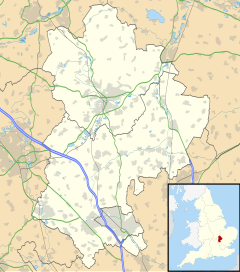Castle, Bedford
| Castle | |
|---|---|
 Bedford town centre, in Castle Ward |
|
| Castle shown within Bedfordshire | |
| Population | 8,259 7,113 (2011 Census. Ward) |
| OS grid reference | TL052498 |
| Unitary authority | |
| Ceremonial county | |
| Region | |
| Country | England |
| Sovereign state | United Kingdom |
| Post town | BEDFORD |
| Postcode district | MK40, MK42 |
| Dialling code | 01234 |
| Police | Bedfordshire |
| Fire | Bedfordshire and Luton |
| Ambulance | East of England |
| EU Parliament | East of England |
| UK Parliament | |
Castle is an electoral ward and area of Bedford, Bedfordshire, England.
The boundaries of Castle Ward are approximately Bromham Road and Goldington Road to the north, Denmark Street and George Street to the east, Rope Walk to the south, with the Midland Main Line railway line and Ashburnam Road to the west.
Castle Ward includes almost all of Bedford town centre, as well as the eastern section of the Castle Road neighbourhood. Castle is the only Ward in the town of Bedford to be located on both sides of the River Great Ouse.
In common usage the 'Castle' area is often synonymous with the Castle Road neighbourhood. Since local government boundary changes in Bedford in 2011, however, the Castle Road neighbourhood has been split between Castle Ward and Newnham Ward.
The name 'Castle' comes from Bedford Castle which is located in the ward. William II granted the Barony of Bedford to Paine de Beauchamp who built the castle. The Castle was destroyed in 1224 by Henry III. In 1166 The town of Bedford was given a Charter. This was when Bedford Market was founded, and it is still held in Castle Ward.
To the south of the river, Cauldwell Priory was built in the area by Franciscan Friars in 1238. The priory included a leper colony dedicated to St Leonard. The priory was dissolved by King Henry VIII in 1541, and around this time a new bridge was built over the River Great Ouse, and the town of Bedford began to expand to the south of the river. The river became navigable as far as Bedford by 1689. Up until this time, Bedford was a small agricultural town, with wool being an important industry in the area for much of the Middle Ages. However, with the opening up of the River Great Ouse, wool declined in importance and brewing became a major industry in the town.
...
Wikipedia

